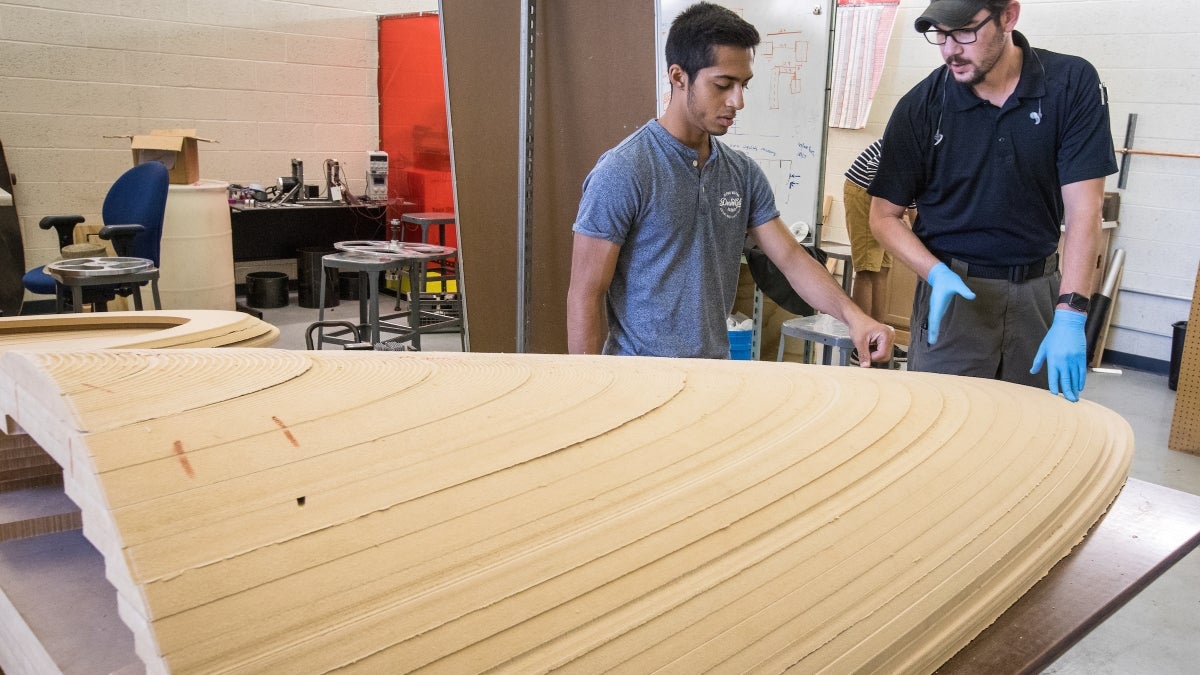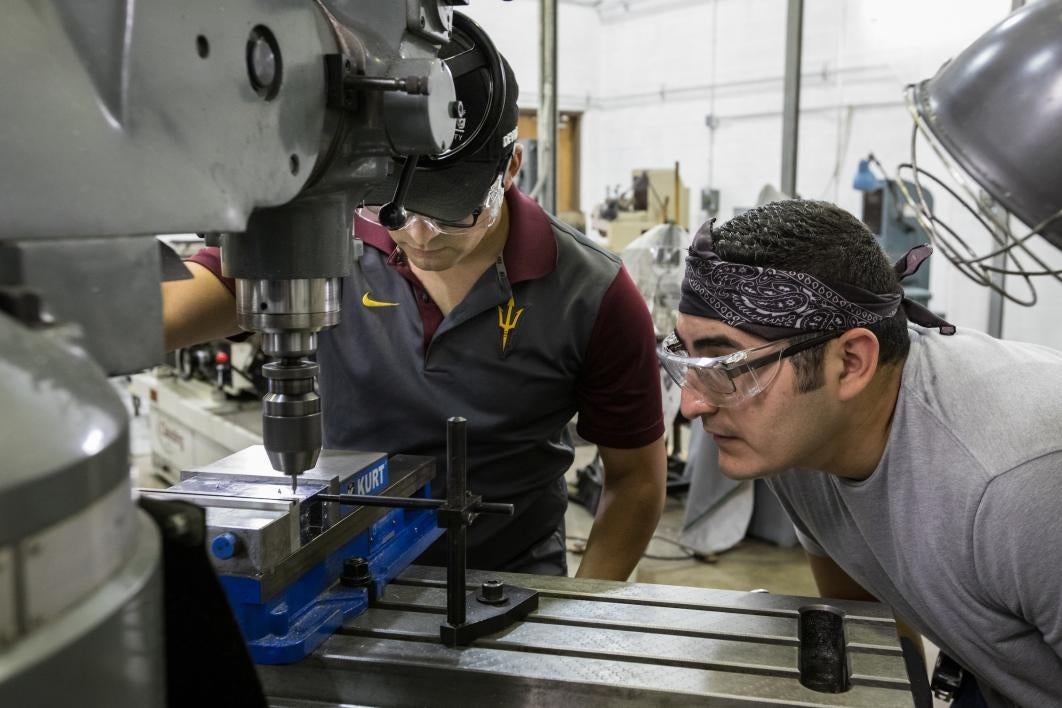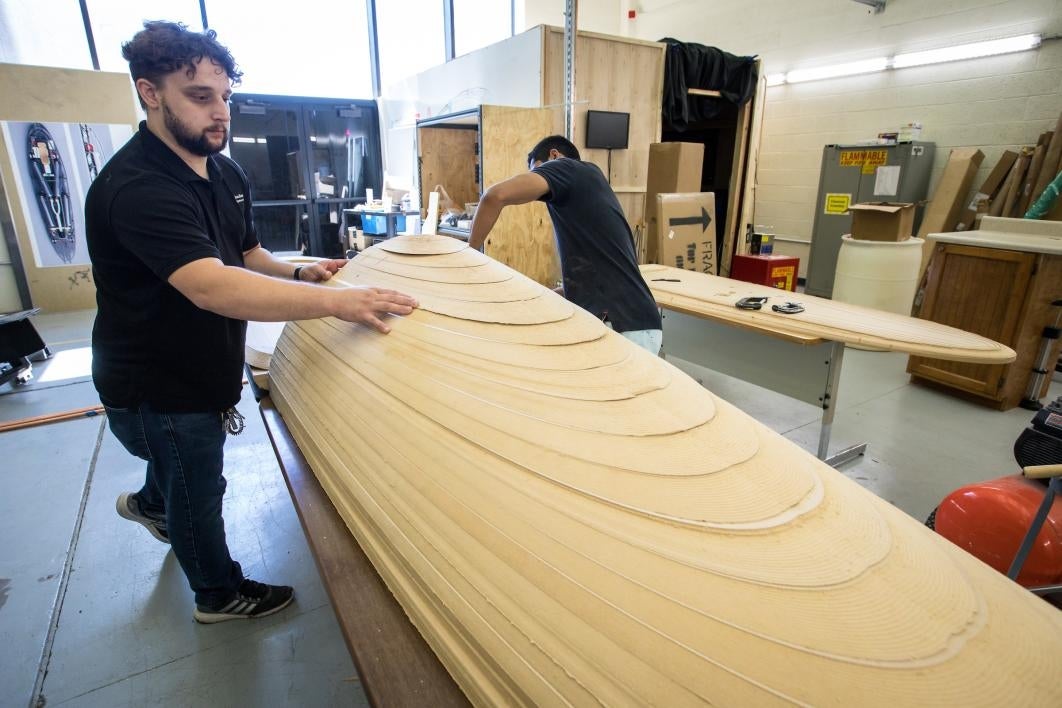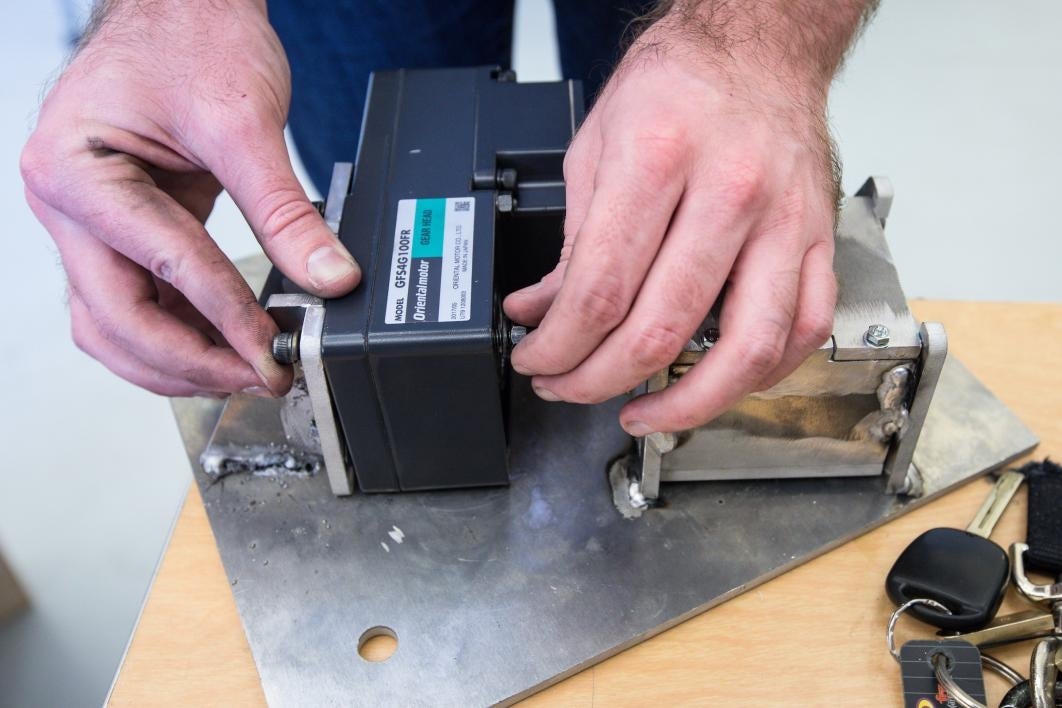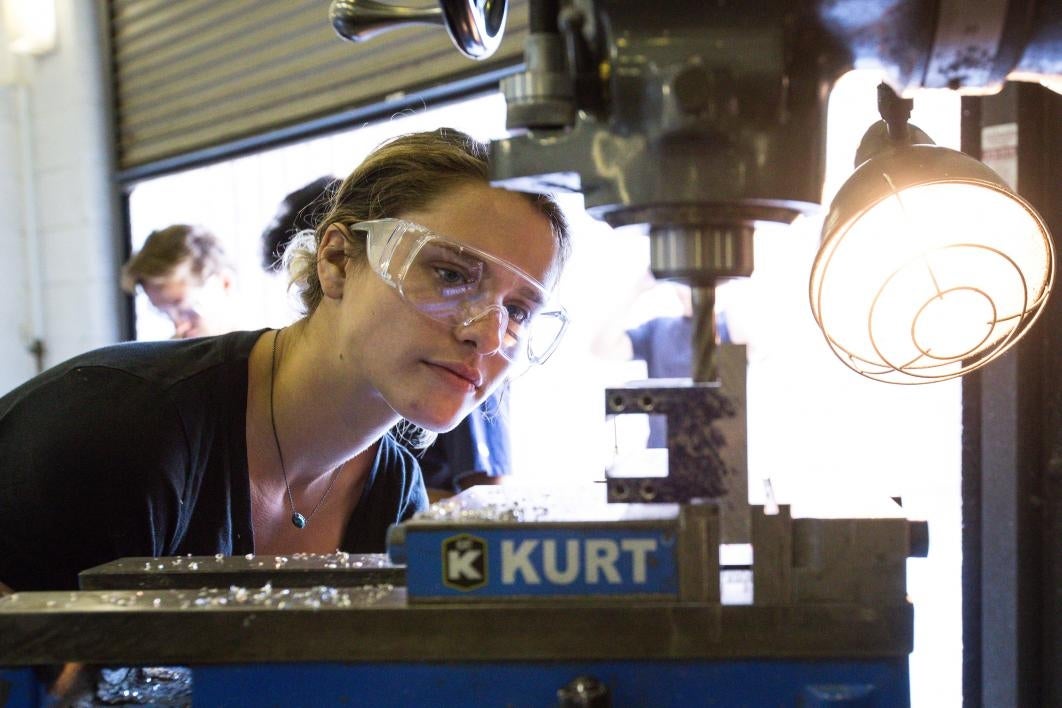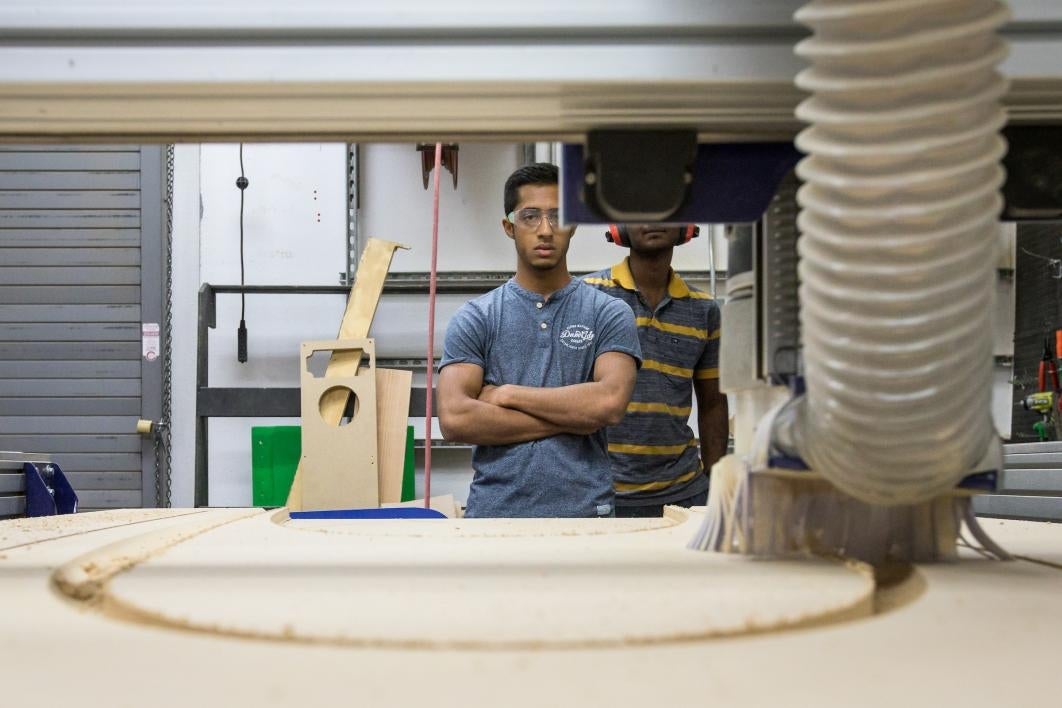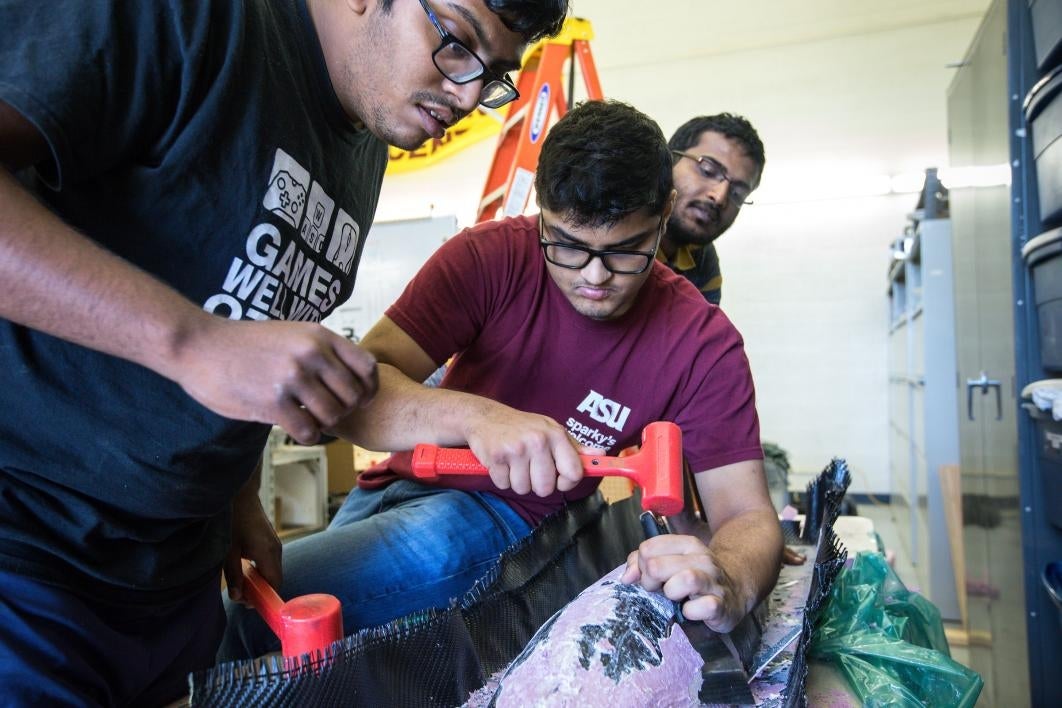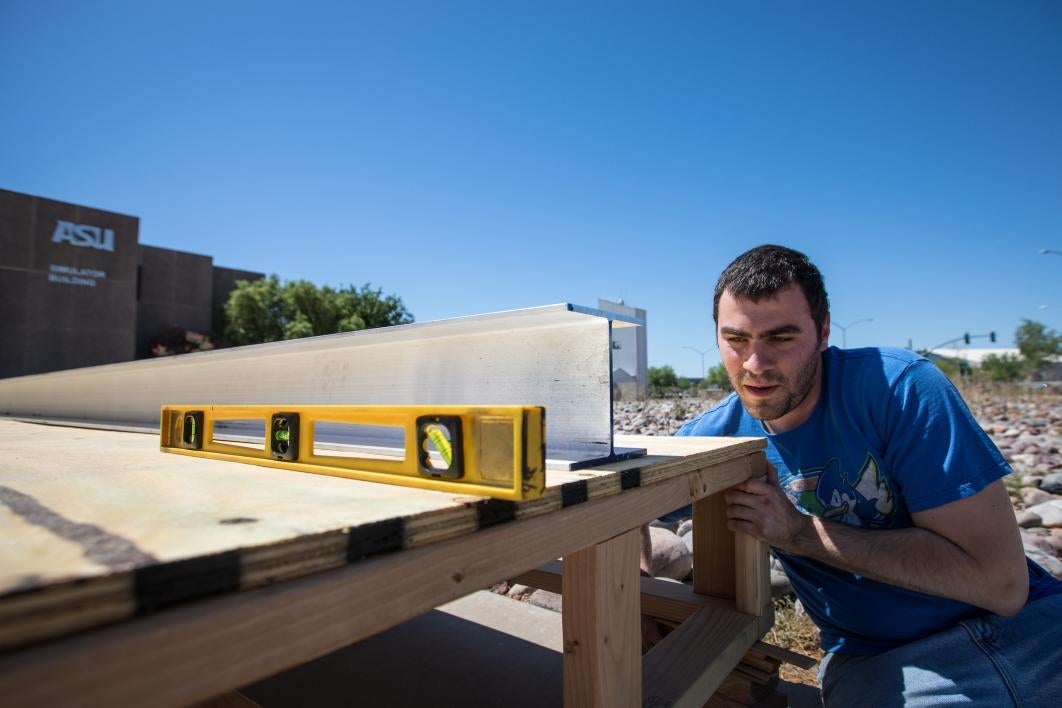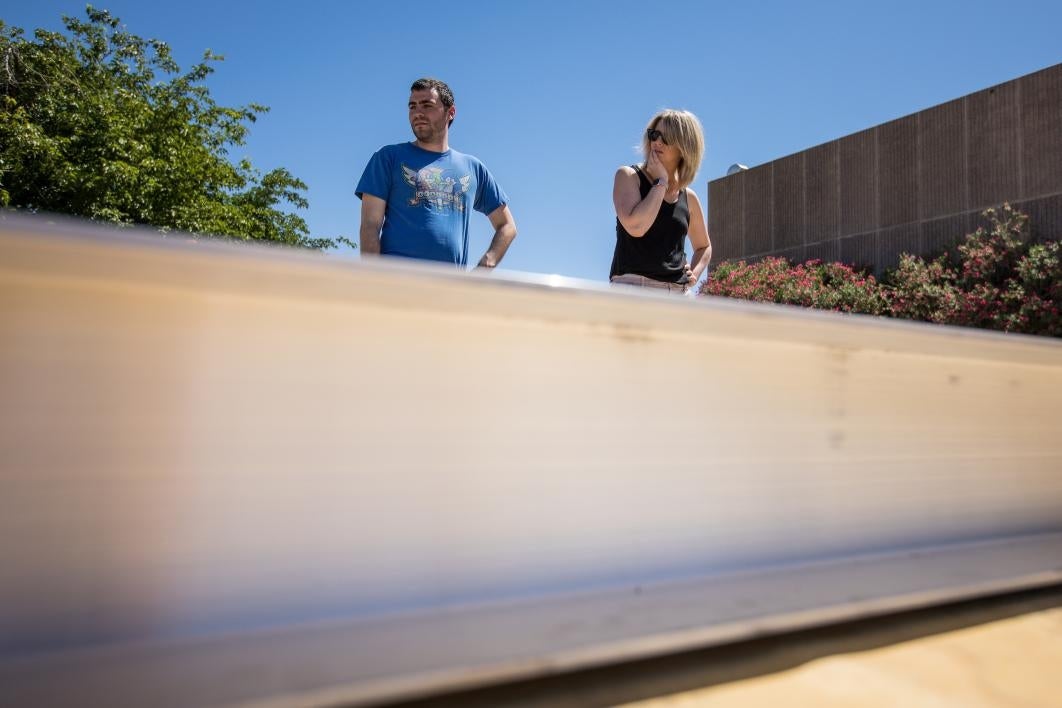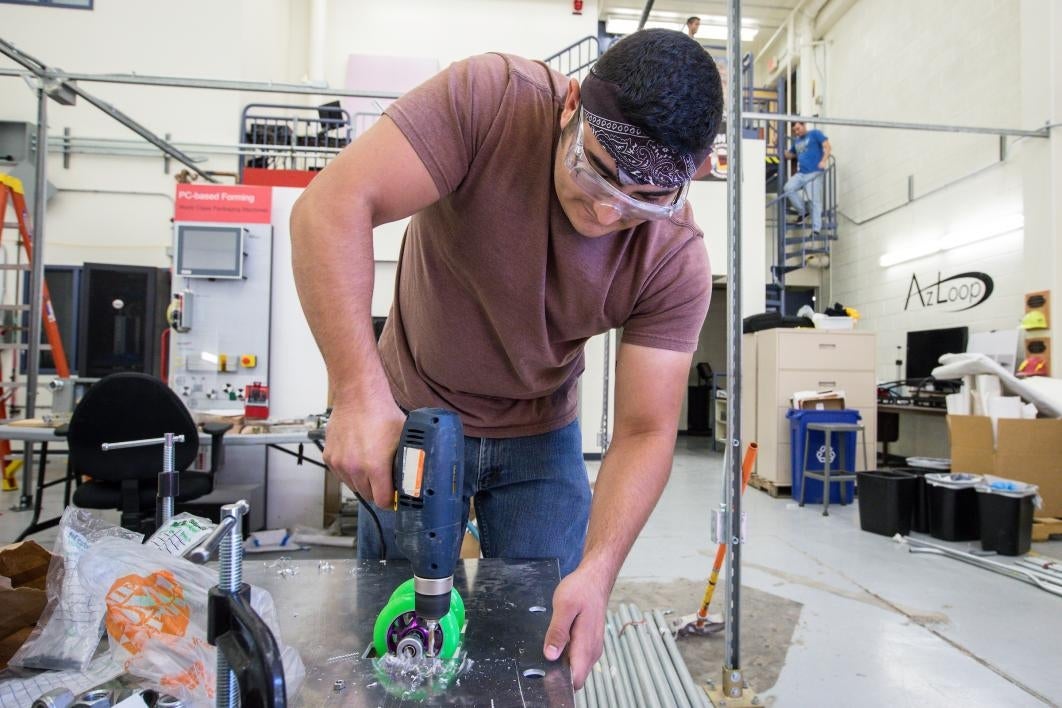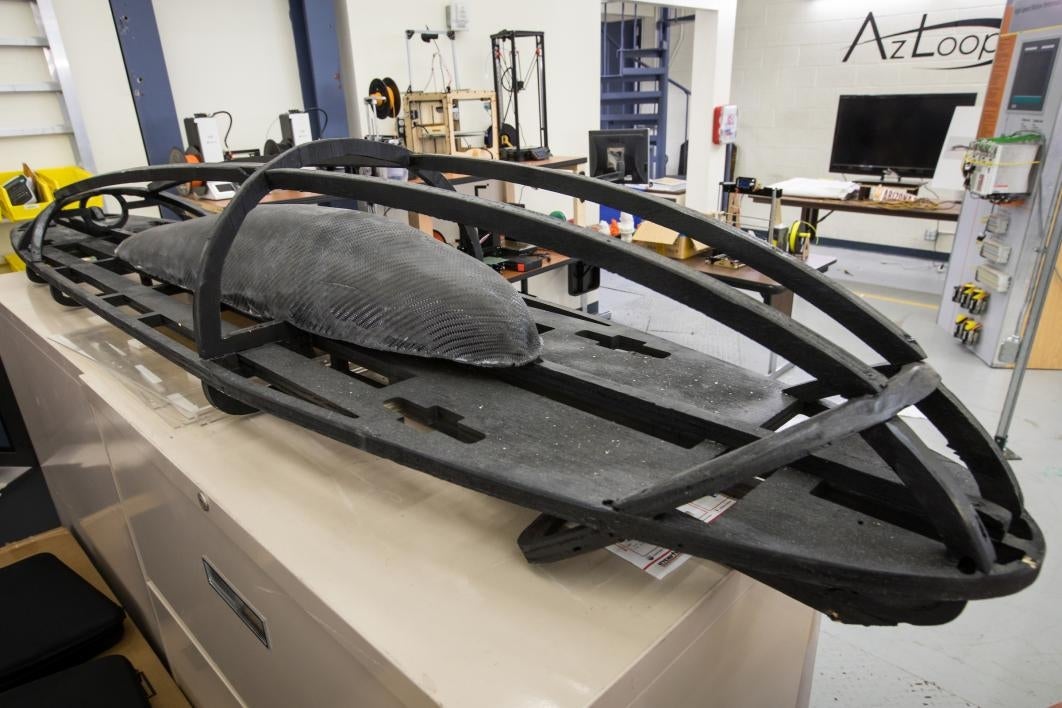The lazy days of summer are anything but for the AZLoop team.
With the Aug. 27 SpaceX competition fast approaching, the team has been busy building propulsion and braking systems, as well as the form needed to mold the pod that will run during the August event.
The goal: creating a working prototype of a new form of proposed mass transit called “Hyperloop” that promises to hit speeds of up to 750 mph.
The team — led by Arizona State University but made up of students from throughout Arizona in a range of majors — is on track to complete the project on time. A 50-foot test track has been built at the ASU Polytechnic campus; they’ll begin testing magnetic propulsion and braking systems the first week of July. Construction of a 150-foot track will begin in early July, with a completion date of around Aug. 1.
Video by Ken Fagan/ASU Now
According to Josh Kosar, co-lead on the project and a new ASU graduate, they started out with a well-defined organizational structure but over time have had to make lots of changes to adapt to individual work styles and skill sets. New leaders emerged, adjustments were made and now the process is working out well.
“The most important thing I have learned so far as manufacturing lead is to manage a team,” said ASU mechanical engineering junior Himanshu Dave. “… Knowing their strengths and weaknesses as well as your own and understanding that has been one of the best skills I have learned.”
A precision-cut scale model of the pod is being produced in layers that will be attached to each other to shape the final pod design. The team will cover it with Bondo to fill in around the rough edges of the wood layers before it is sanded and primed.
“It’s all experimentation, lifting up the shape of it, changing it a little bit,” Dave said.
Magnetic braking systems are in the works, as well as propulsion systems. They will be attached to a sled filling in as the pod to test forward motion and braking systems on the 50-foot track.
“They’ve got what it takes. They are careful and rational,” said ASU Professor John Robertson, lead faculty adviser. “It’s like in any race — you want to blow through the finish line, you don’t want to fall over the finish line. You’ve got to blow through it, and I think that is what they are going to do.”
Top photo: ASU mechanical engineering junior Himanshu Dave (left) gets some guidance from Chandler Gilbert Community College student Ernest Poteat on how to treat the layered model for the vehicle's carbon fiber shell on ASU's Polytechnic campus on Thursday, June 29. The mechanical team will cover the model with Bondo Body Filler, sand it smooth, paint on primer then a release agent and follow that with the carbon fiber strips. When completed in about six weeks, it will be attached to the vehicle the AZLoop team will take to the August SpaceX Hyperloop Pod Competition in California. Photo by Charlie Leight/ASU Now
More Science and technology

Ancient sea creatures offer fresh insights into cancer
Sponges are among the oldest animals on Earth, dating back at least 600 million years. Comprising thousands of species, some with lifespans of up to 10,000 years, they are a biological enigma.…

When is a tomato more than a tomato? Crow guides class to a wider view of technology
How is a tomato a type of technology?Arizona State University President Michael Crow stood in front of a classroom full of students, holding up a tomato.“This object does not exist in nature,” he…

Student exploring how AI can assist people with vision loss
Partial vision loss can make life challenging for more than 6 million Americans. People with visual disabilities that can’t be remedied with glasses or contacts can sometimes struggle to safely…
